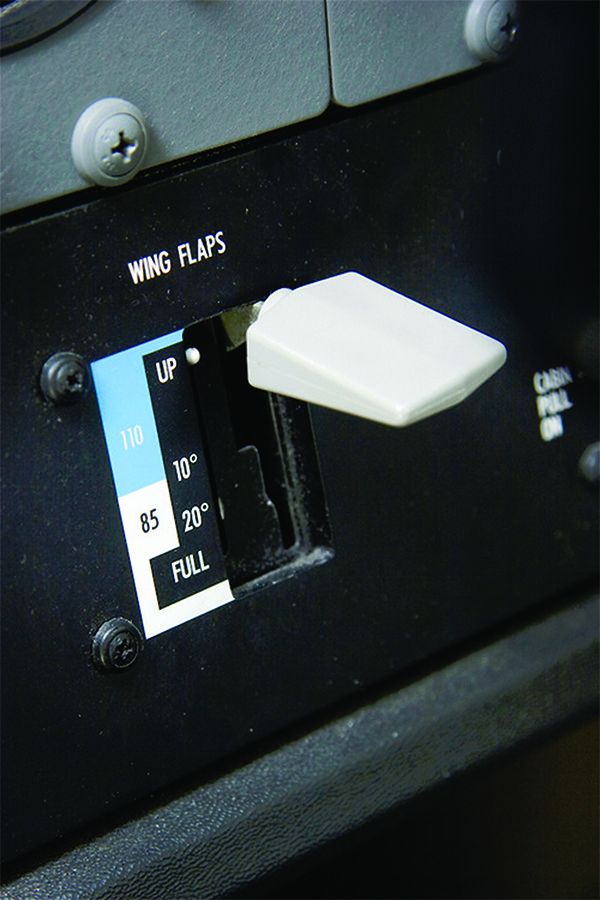As a student pilot, I did a lot of reading when I couldn’t fly, including the popular aviation magazines and whatever else I could find laying around the FBO. A little knowledge can be a bad thing, of course, and so it was with my understanding of something called a “missed approach.” The relevant article discussed and emphasized the need to ensure the airplane was properly configured to attain its best climb performance and clear obstacles at the end of the runway and, perhaps, those further away from the airport.
At some point in reading the long-forgotten article, I got it into my head that leaving the wing flaps deployed as the airplane accelerated was a good thing, at least until clearing the trees at the runway’s end was assured. I found the discussion intriguing and, although I had covered and performed go-arounds with my instructor, had never heard of a missed approach.
My instructor had endorsed me for unlimited local solo flights and on my next one, I headed off to a nearby runway next to a lake turned into a tourist attraction and swimming hole. It was a fine summer day and lots of people were out sunbathing. But I had an airplane and something new to practice. I flew the traffic pattern in my rented Cessna 150 and, as I had been trained, added the full 40 degrees of flaps and flew down to a few feet above the runway, without touching down. Time to check out this “missed approach” thing!
I firewalled the throttle, turned off the carb heat and—hey, what’s going on? The little 150, with all of its barn-door flaps hanging out, ballooned up, its nose aiming for Mars. A healthy push on the yoke fixed that, and I was still flying, about 10 feet off the ground. Carefully watching my airspeed, I waited for it to begin climbing as I glanced to the far end of the runway and the trees just beyond.
Amazingly, the 150 did start to climb, but I wasn’t too happy with the likelihood of clearing the trees. Correctly figuring the flaps were the problem, I milked them up from 40 to 30 degrees, and reveled in the additional climb performance. Hmmm…maybe I should do that again? I did, and retracted the flaps to 20 degrees. Now we were humming, and I sailed over the trees with several feet to spare and increasing airspeed. I raised the flaps to 10 degrees, then fully retracted them and I was flying a normal takeoff again. Having had enough fun, I turned for home and landed without any further drama.
I learned lots: Don’t plan on climb performance with full flaps. Don’t try something new at an unfamiliar airport. Don’t believe everything you read. If there’s some new thing about aviation you don’t understand, do more research. Then talk it over with your instructor first, and let him or her demonstrate it before trying it yourself.
Have you encountered a situation or hazardous condition that yielded lessons on how to better manage the risks involved in flying? Do you have an experience to share with Aviation Safety’s readers about an occasion that taught you something significant about ways to conduct safer flight operations? If so, we want to hear about it.
We encourage you to submit a brief (500 words) write-up of your Learning Experience to Aviation Safety for possible publication. Each month, Aviation Safety publishes a collection of similar experiences sent to us by readers. Sharing with others the benefit of your experience and the lessons you learned can be an invaluable aid to other pilots.
You can send your account directly to the editor by e-mailing it to [email protected]. Put “Learning Experience Submission” in the subject line; add your name and daytime telephone number at the bottom of the e-mail.
Your report will be considered for publication in the Aviation Safety’s readers’ forum, “Learning Experiences,” and may be edited for style and length. Anonymity is guaranteed if you want it. No one but Aviation Safety’s editor is permitted access to the reports. Your name and telephone number are requested only so that the editor can contact you, if necessary.
While we can’t guarantee your submission will get published, we can guarantee that we’ll closely review and consider using it.
All Learning Experience submissions become the property of Aviation Safety and may be republished.




